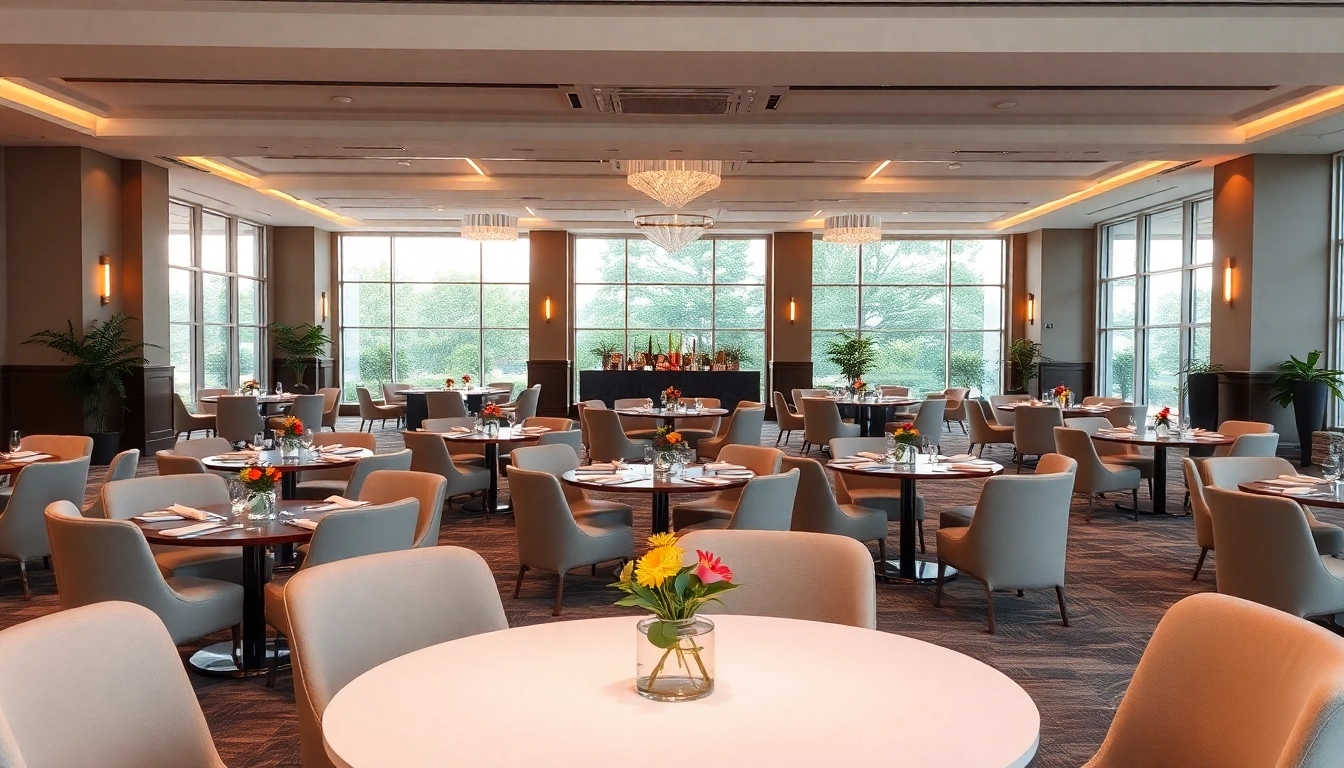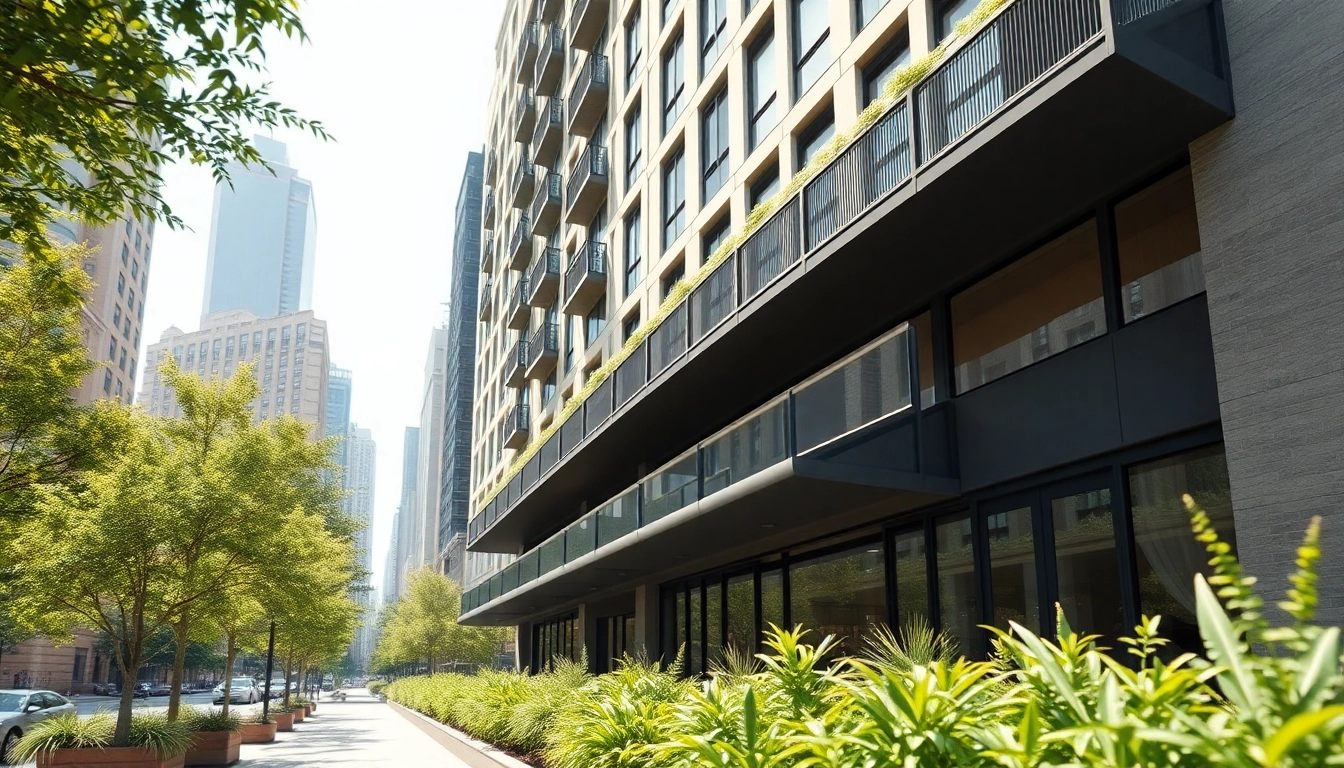Understanding the Importance of Event Space
When planning an event, selecting the right venue plays a pivotal role in determining its success. This choice not only affects the logistical aspects but also influences the overall experience of the attendees. A well-chosen event space can enhance the atmosphere, facilitate engagement, and contribute to the long-lasting memories your event aims to create.
Why Choose the Right Event Space
The significance of choosing the right event space cannot be overstated. It serves as the backdrop for interactions, networking opportunities, and the overall energy of the event. The right venue can reflect the theme of the occasion, resonate with guests, and even impact their behavior. For instance, a corporate seminar held in a sterile boardroom might stifle creativity, while a vibrant gallery can inspire innovative ideas. Furthermore, venues that evoke the appropriate aesthetic raise the asthetic appeal of presentations, workshops, and networking sessions, leading to a more engaging atmosphere.
How Location Affects Your Event Space Selection
Location is another critical factor in selecting an event space. A strategically located venue increases accessibility for attendees and can significantly boost participation rates. Consider the availability of public transport, parking options, and proximity to hotels or restaurants. The venue’s vicinity to local attractions can also serve as a plus, providing entertainment opportunities for guests outside the event schedule. Ultimately, picking a location that is convenient for your target audience is instrumental in enhancing participation and overall satisfaction.
The Role of Layout in Event Space Success
The layout of an event space can either facilitate or hinder interaction among participants. Whether a seminar, wedding, or networking event, understanding the flow of movement within the space is essential. Open layouts can encourage mingling and interactions, while seated arrangements can foster discussions among specific groups. Customization options, such as movable partitions, modular furniture, or unique seating arrangements, should be taken into account when choosing a venue. Thoughtful layout planning promotes participant engagement and contributes to the event’s overall success.
Key Features of a Functional Event Space
A functional event space should have various essential features that cater to the needs of planners and participants alike. Failing to provide adequate amenities can lead to frustration and dissatisfaction among guests.
Essential Amenities for an Ideal Event Space
Consider the must-have amenities when evaluating potential venues. Basic requirements include reliable Wi-Fi, audio-visual equipment, appropriate seating arrangements, and catering services. Additionally, facilities such as restrooms and storage areas should be accessible and well-maintained. An ideal venue may provide extras like breakout rooms, charging stations, and even on-site technical support to smoothen operations and allow organizers to focus on their agenda.
Flexibility in Event Space Design
The flexibility of an event space is a major factor in its functionality. A space that allows for multiple configurations will adapt to the varying needs and styles of different events. For example, venues that offer modular furniture or movable walls enable planners to customize the environment based on guest numbers or the type of interaction required. When venues can accommodate various seating styles—such as theater, banquet, or classroom formats—it adds immense value.
Accessibility Considerations for Event Spaces
Accessibility is paramount for ensuring inclusivity in any successful event. Consideration for guests with mobility challenges, visual or auditory impairments is critical. Venues must comply with regulations, such as ADA, by providing ramps, elevators, proper signage, and designated seating. Not only does this reflect a commitment to inclusivity, but it also enhances the overall experience for all attendees. Providing clear information about accessibility options in promotional materials is vital in attracting a diverse audience.
Planning an Event in Your Chosen Space
Once you’ve selected the perfect event space, careful planning is essential to convert that potential into success. Every aspect of your event must harmonize with the features of the venue.
Creating a Schedule for Your Event Space
A well-structured schedule aligns the timing of activities with the venue’s layout and capabilities. Begin with an overview of the event’s goals and objectives, and plan each segment to maintain a natural flow. For example, consider guest arrivals, speeches, workshops, refreshments, and networking opportunities in your timeline. An organized schedule not only provides clarity to participants but also helps avoid logistical hiccups during the event. It’s wise to include buffer times between segments to account for any delays and maximize engagement.
Setting Up the Event Space: Best Practices
Setting up the event space correctly can have a lasting impact on its success. Begin by assessing the venue well in advance to understand its layout and available resources. Collaborate with staff to develop a comprehensive plan that outlines equipment, seating arrangements, and pathways for movement. Pay attention to visibility and acoustics; speaker placement can significantly affect audience engagement. Consider trial runs with presenters to test audio-visual setups and refine sound levels. Moreover, setup day is crucial, so be early to ensure everything aligns with your vision and runs smoothly.
Engaging Participants in Your Event Space
Maintaining attendee engagement during an event is a fundamental goal for planners. To this end, interactive elements should be integrated into the space. Consider using polls, Q&A sessions, and breakout discussions to actively involve participants. Utilizing technology can enhance interactions; live-streaming, apps, or audience response systems can foster real-time feedback and engagement. Encouraging networking can also add value, such as designated networking hours or mingling breaks, allowing participants to make connections.
Enhancing the Atmosphere of Your Event Space
The atmosphere of an event space significantly affects the mood and engagement of attendees. A carefully crafted environment can create lasting impressions and elevate the experience.
The Impact of Decor on Event Space Vibes
Decor plays a critical role in setting the tone of an event. Consider incorporating themed decorations that reflect the event objectives or inspire creativity. From table settings to wall art, every detail counts toward creating a cohesive look. Use colors, textures, and styles that resonate with your audience while enhancing the message of the event. Moreover, floral arrangements or ambient elements can introduce a fresh atmosphere that exudes warmth and hospitality.
Utilizing Lighting to Transform Event Spaces
Lighting can dramatically transform an event space and evoke specific moods. Natural light can be leveraged for daytime events, while adjustable artificial lighting can enhance the vibe during evening gatherings. Color washes can emphasize key areas, and spotlighting can guide attention to speakers or important announcements. Additionally, utilizing dimmers or incorporating ambient lighting elements, such as LED strips, can create an inviting atmosphere while improving visibility for all attendees.
Choosing Themes to Match Your Event Space
Themes provide coherence and a shared experience for attendees. When selecting a theme, consider the overall objectives of the event and how they resonate with the chosen venue. For instance, an outdoor space may lend itself well to an eco-friendly theme, utilizing sustainable materials and natural décor. Consistency across all elements—such as invitations, stage design, and agenda—reinforces the theme and immerses participants in the experience. Incorporating themed activities or interactive elements can also add depth to the event, leaving attendees with memorable takeaways.
Measuring Success of Your Event Space
After the event concludes, evaluating its success is crucial to understanding its impact and areas for improvement. Measurements should not only reflect logistical outcomes but also attendee satisfaction and engagement.
Gathering Feedback Post-Event in the Event Space
One of the best ways to gauge success is through feedback. Consider devising a systematic approach to collect feedback from participants, whether through surveys, interviews, or interactive feedback boards during the event. Ask targeted questions that help identify strengths and weaknesses of the venue and event itself. Effective feedback can yield powerful insights for future event planning, ensuring continuous improvement.
Key Performance Indicators for Event Space Success
Setting key performance indicators (KPIs) provides a measurable framework for evaluating your event. Outline relevant metrics at the outset, such as attendance rates, audience engagement levels (through interactions, social media mentions), budget adherence, and overall satisfaction ratings. Establishing KPIs not only helps assess the effectiveness of the event space but also provides valuable data for stakeholders, enhancing transparency and trust in the planning process.
Continuous Improvement for Future Event Spaces
Every event offers valuable lessons that can guide improvements in future endeavors. Utilize gathered insights to revise planning strategies and enhance the overall event experience. This might involve adjustments in venue selection, layout, participant engagement strategies, or post-event follow-up processes. Adopting an iterative approach to the event planning and evaluation process fosters growth, leading to better outcomes and heightened success in future events.














Leave a Reply